10 questions: O-RING HERstellung
#1 How are O-rings manufactured step by step?
Material selection and mixing
First, the base elastomer suitable for the specific application of the O-ring is selected. Fillers, vulcanizing agents, anti-ageing agents and other additives are then mixed with this elastomer to achieve the desired physical properties.
Shaping
The mixture is shaped into the specific O-ring shape either by compression, transfer or injection molding. In compression molding, the compound is filled into a pre-heated mold and vulcanized under pressure. Transfer molding and injection molding use a similar approach, but with different methods of introducing the rubber into the mold.
Vulcanization
During this step, the mould is heated, which causes the chemical cross-links between the polymer chains to form. This process gives the O-ring its final properties such as elasticity and strength.
Post-processing
After vulcanization, the O-rings are removed from the mould and post-processing follows. This can include deburring (removal of excess material), washing and testing the O-rings for quality standards.
Quality control
The finished O-rings undergo various tests to ensure that they meet the specifications. These include dimensional tests, hardness tests and, in some cases, specific functional tests.
| Step | Step description | Tools/materials | Importance |
|---|---|---|---|
| Mixture | Mixing rubber types and additives | Mixer | Basis for quality |
| Shaping | Pressing the mixture into shape | Press molds | Determines size/shape |
| Vulcanization | Curing by heat/pressure | Vulcanizing press | Secures properties |
| Deburring | Remove excess material | Deburring tools | Improves surface finish |
| Quality inspection | Testing for standards | Measuring instruments | Ensures quality |
REQUEST O-RINGS QUICKLY AND EASILY?
Almost any dimension available
Offer received in record time
No minimum order quantities or minimum item values
One contact for all concerns
#2 How are additives in O-ring compounds defined?
Additives in O-ring compounds are special chemicals that are added to the rubber compound to improve certain properties such as elasticity, heat resistance, chemical resistance or color.
These can include fillers, plasticizers, anti-ageing agents, vulcanization accelerators and colour pigments. The exact composition depends on the desired application and performance of the O-ring.
The selection and dosage of additives is crucial for the quality and performance of the finished O-ring.
| Additive | Function | Example of | Importance |
|---|---|---|---|
| Fillers | Reinforce the mixture | Carbon black, chalk | Determines strength |
| Plasticizer | Increase flexibility | Phthalates | Influences elasticity |
| Anti-ageing agent | Protection against weathering | Antioxidants | Extends service life |
| Vulcanization accelerator | Accelerates vulcanization | Sulfur compounds | Controls curing time |
| Color pigments | Colors the O-ring | Titanium dioxide (white) | For specific applications |
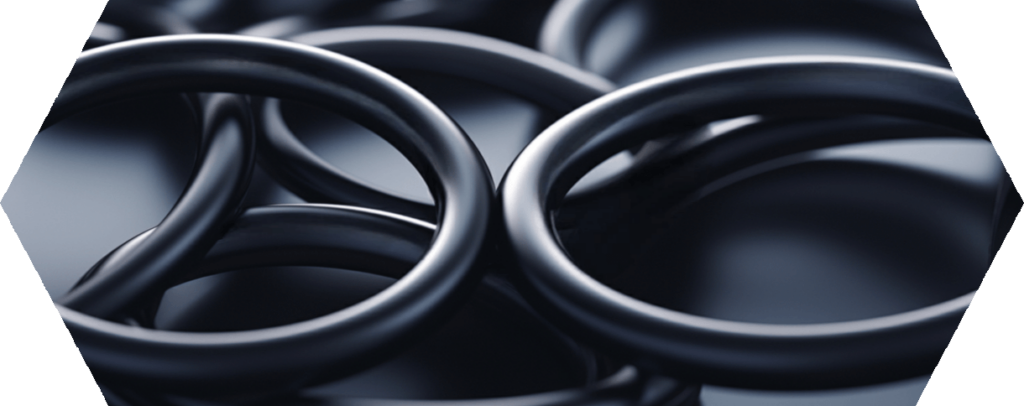
#3 What are the processes for manufacturing O-rings?
Compression method (compression shaping)
The compression process, also known as compression molding, is one of the oldest and simplest methods of manufacturing O-rings and other rubber-like products.
The prepared rubber compound is placed directly into a two-part mold that has the desired shape of the O-ring. When the mould is closed, the rubber compound is vulcanized under heat and pressure, causing it to harden and take on the shape of the cavity.
Injection molding (injection molding)
During injection molding, the rubber compound is injected into a closed mold under high pressure and heat. This process enables very precise control over the shape and size of the O-ring and is particularly suitable for mass production or for O-rings with complex geometries.
Injection molding is more efficient than compression molding because it requires less rework and ensures greater product consistency.
Impact vulcanization
Impact vulcanization is a special process that is mainly used to produce large or unusually shaped O-rings that cannot be formed in one piece.
In this process, the ends of a preformed rubber strip are joined together and vulcanized using heat and pressure to create a permanent bond. This process is often used in the manufacture of O-rings for special industrial applications where standard sizes are not suitable.
| Procedure | When to use | Advantage |
|---|---|---|
| Compression process | For simple to medium-complex O-ring geometries and small to medium series | Cost-effective for smaller series; good control over material filling and properties |
| Injection molding | For complex geometries and large series | High precision and reproducibility; efficient in mass production; minimizes material waste |
| Impact vulcanization | For large or specially shaped O-rings that cannot be produced as a continuous ring | Enables the production of O-rings in almost any size; flexible for special shape requirements |

#4 How is the black color of O-rings created?
Many O-rings are black as standard because carbon black is used as a filler, which improves the mechanical properties and increases UV and ozone resistance.
Carbon black is a cost-effective, efficient booster that improves the service life and performance of O-rings under various operating conditions.
It also gives the rubber a uniform color and improves heat dissipation, which is particularly beneficial in applications with high temperatures.
| Property | Influence of carbon black | Advantage |
|---|---|---|
| Mechanical properties | Improvement | Increased strength and durability |
| UV and ozone resistance | Increase | Extended service life in harsh environments |
| Heat dissipation | Improvement | Better performance at high temperatures |
| Cost efficient | Cost-efficient | Economically advantageous for production |
| Color | Uniform black color | Consistent appearance |
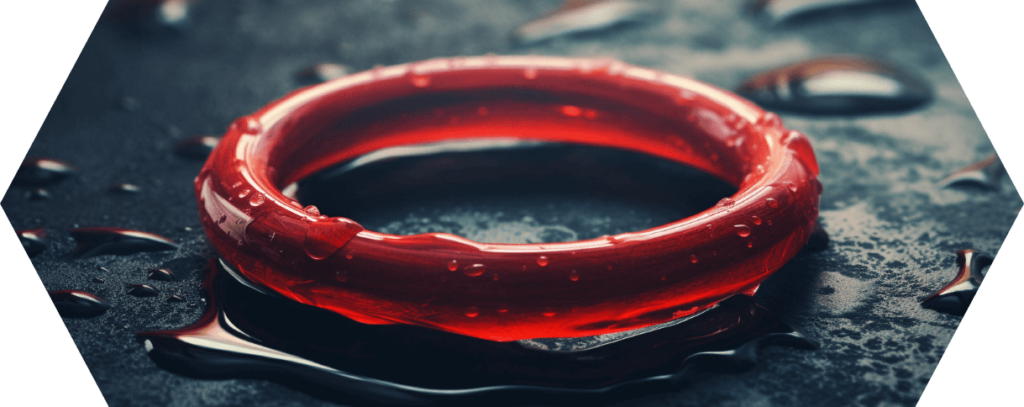
#5 How does an O-ring fulfill the most important quality criteria?
An O-ring must fulfill various quality criteria in order to guarantee its function and reliability in applications.
This includes dimensional accuracy, material resistance to media and temperatures, degree of hardness as well as compression and elongation properties. Compliance with industry standards and specifications, such as ASTM or ISO, is also crucial.
In addition, O-rings must be inspected for surface defects, cracks and other manufacturing defects to ensure high performance and longevity in their specific application environment.
| Criterion | Criterion Description | Test procedure |
|---|---|---|
| Dimensional accuracy | Conformity with specified dimensions | Measuring gauges, micrometers |
| Material resistance | Resistance to media/temperatures | Chemical/thermal tests |
| Degree of hardness | Determination of material hardness | Shore hardness test |
| Compression and elongation properties | Behavior under load | Tensile and compression tests |
| Industry standards | Compliance with specific standards | ASTM, ISO certifications |
| Surface defects | Free of cracks and defects | Visual inspection |
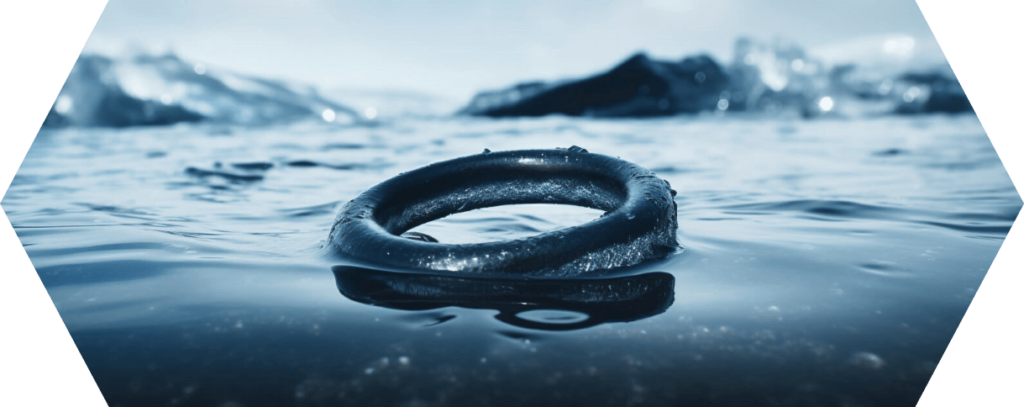
#6 How is deburring carried out on O-rings?
O-rings are deburred using various processes to remove excess material after vulcanization and achieve a smooth surface.
Common methods include manual trimming, cryogenic deburring, where burrs are made brittle and removed by applying cold, and drum deburring, where O-rings are rotated in drums with abrasives to remove burrs.
Each method has its specific advantages, depending on the material and requirements of the O-ring.
| Method | Method Description | Advantages |
|---|---|---|
| Manual trimming | Removal of burrs with tools | Precise control |
| Cryogenic deburring | Use of cold to remove burrs | Effective for hard materials |
| Drum deburring | Grinding in a drum | Uniform surface |
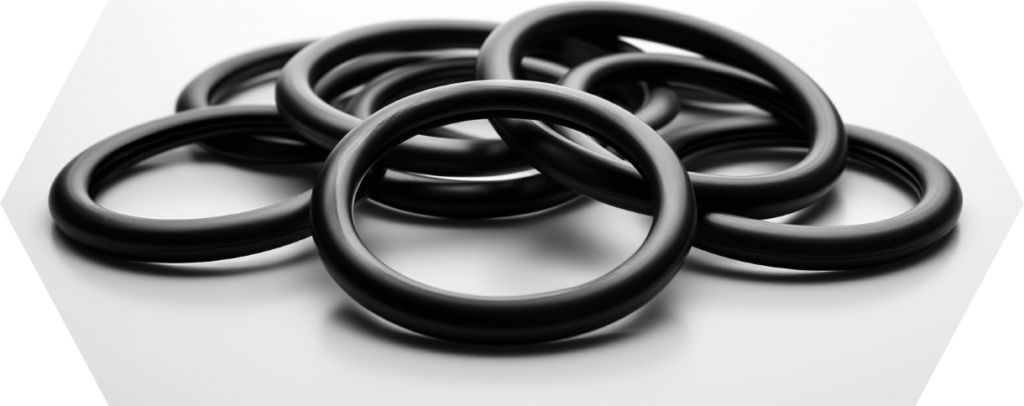
#7 How does an O-ring fulfill the REACH and ROHS requirements?
For an O-ring to comply with REACH and ROHS, it must not contain certain harmful substances. REACH restricts the use of certain chemicals that are considered harmful to health or the environment.
ROHS sets limits for the use of hazardous substances in electrical and electronic equipment, including lead, mercury, cadmium, hexavalent chromium, polybrominated biphenyls (PBB) and polybrominated diphenyl ethers (PBDE).
Compliance with these regulations ensures that O-rings can be used safely in applications.
| Regulation | Restricted substances | Application |
|---|---|---|
| REACH | Specific chemicals | General products |
| ROHS | Lead, mercury, cadmium, etc. | Electronics |
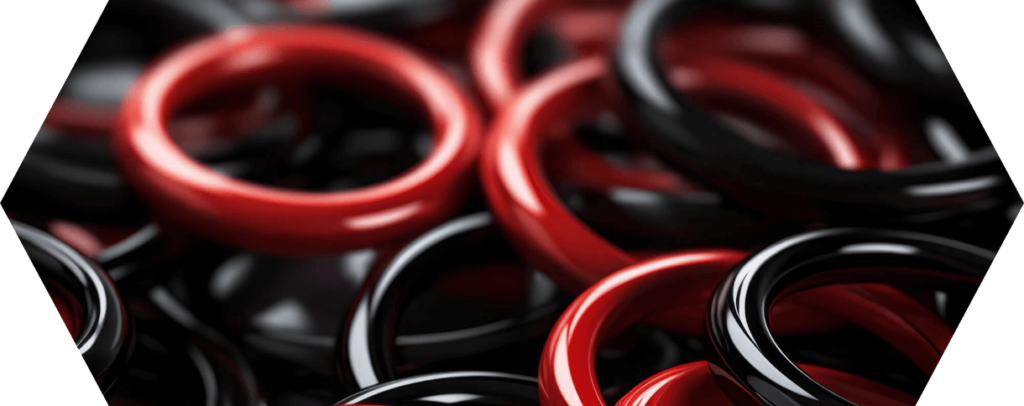
#8 How do you test the durability and performance of O-rings?
The durability and performance of O-rings is tested through various tests, including tensile strength tests, hardness tests, ageing tests under heat and ozone, as well as media resistance tests against various chemicals and liquids.
These tests simulate long-term operating conditions to ensure that the O-rings meet the specified requirements for their operating environment.
The results help to evaluate the service life and reliability of O-rings in their intended application.
| Test type | Test description | Purpose |
|---|---|---|
| Tensile strength | Measures the force until breakage | Evaluation of mechanical strength |
| Hardness test | Determines the material hardness | Assessment of elasticity |
| Ageing tests | Exposure to heat/ozone | Prediction of service life |
| Media resistance | Contact with chemicals/liquids | Checking the chemical resistance |
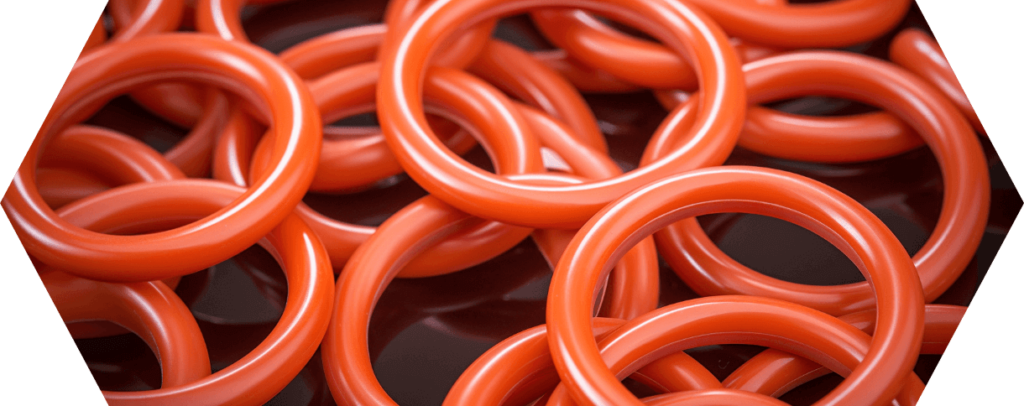
#9 How do temperature and vulcanization time affect O-rings?
Temperature and vulcanization time have a significant influence on the physical properties of O-rings.
Higher temperatures accelerate vulcanization, which leads to faster curing, but can also result in the risk of overcuring, which makes the O-ring brittle. If the vulcanization time is too short, the O-ring may not cure completely, which impairs its mechanical strength and elasticity.
The optimum combination of temperature and time is crucial for achieving the desired properties.
| Factor | Influence | Optimal condition |
|---|---|---|
| Temperature | Accelerates vulcanization | Check carefully |
| Vulcanization time | Determines degree of curing | Exact compliance |
| Overhardening | Makes O-ring brittle | Avoid |
| Underhardening | Impairs strength/elasticity | Avoid |

#10 How do you recycle O-ring materials?
The recycling of O-ring materials requires special processes to separate and reuse the elastomers.
Mechanical recycling involves shredding and grinding the O-rings into granulate, which is used as a filling material in new products.
Chemical recycling uses pyrolysis or hydrolysis to convert the polymers back into their monomeric components, which can then be used to synthesize new polymers. These methods help to conserve resources and reduce waste.
| Method | Method Description | Advantages | Disadvantages |
|---|---|---|---|
| Mechanical recycling | Shredding and grinding into granulate | Simple and cost-effective | Limited purity |
| Chemical recycling | Recycling into monomeric components | High purity possible | Technically more complex |
| Energy recovery | Combustion for energy generation | Energy production | Non-sustainable |
“I am convinced that we should share our knowledge with the world. I hope I have been able to answer all your questions. If you have any further questions, please feel free to contact us at any time. We will be happy to help you.”

Lord of the O-rings Author of the Sealing Academy
